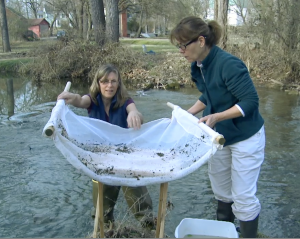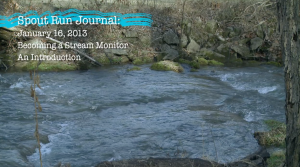Stream restoration specialist, Seth Coffman, from Trout Unlimited describes progress on the first targeted streambank restoration project on Spout Run, just below Millwood and the Carter Hall spring.
In May of 2013, we captured video of Seth and James Fulcher recording topographic information as we witnessed the severity of the vertical and incised banks which contribute heavily to the sedimentation of the stream. The before-and-after segments in the latest video journal entry show the remarkable improvement and future benefits of this work in progress.



